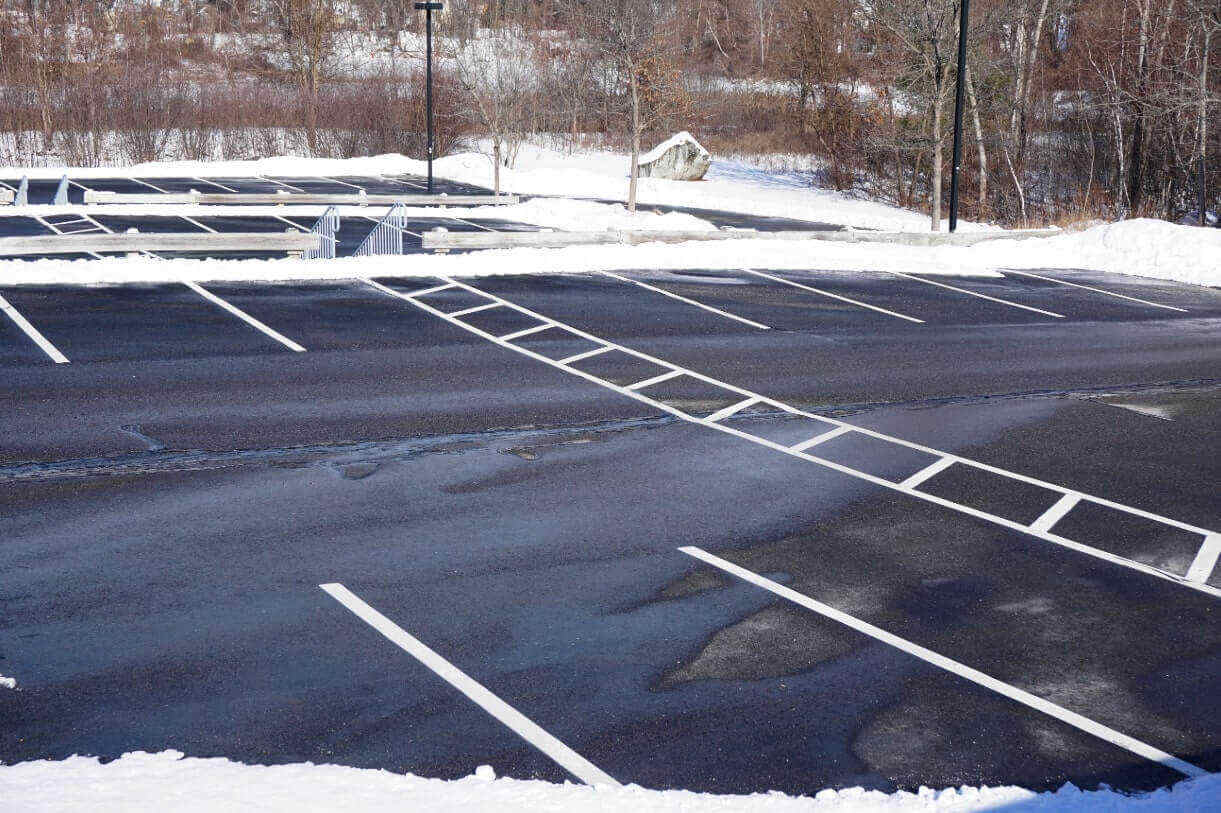
Wisely managing your parking lot during the winter season is crucial to your facility's productivity, safety of those driving and walking on the parking lot surface, and keeping snow and ice management costs as low as possible. One thing you can do to manage your parking lot is to pretreat it with anti-icers before a big storm hits.
Why pretreat your parking lot before a storm?Pretreating your parking lot doesn’t only save time, it also saves money. With pretreating, you’ll use only about 25% as much salt as you would if you de-iced after a storm. And because pretreating saves time, it also saves money.
Here are some other benefits of anti-icing beforehand:
- Pretreatment prevents snow from bonding with the pavement, so snow removal is easier
- With a pretreated pavement, snowfall melts on contact. This means your parking lot can be used longer after a storm begins, and you’ll have less snow to remove later
- Pretreatment can help prevent black ice
- Pretreatment causes salt crystals to spread evenly over the surface of the parking lot. Crystals stay in place better than do granules (even pre-wet granules), provided it doesn’t rain
Best practices for pretreating your parking lot
It’s not only a question of if you pretreat your parking lot, but also how you do it. Here are some industry best practices for effective pretreatment:
- Use only as much anti-icer as needed. This will increase cost-effectiveness and minimize salt damage to your pavement
- For areas near landscaping, use an anti-icer that is less harmful to plant life than is salt
- Weather permitting, you may want to pretreat your parking lot several days ahead of a storm to combat frost and freezing drizzle. Otherwise, wait until just before or immediately after it hits
- Wait until the pavement temperature reaches 35ºF (1.6ºC) or lower to apply calcium or magnesium chloride-based liquids. These anti-icers can become slippery if they’re applied to warmer pavement
- When temperatures in your parking lot area dip to 15º F (-9ºC) or lower, anti-ice with granules (preferably wet) or liquids, but not salts. At these low temps, salts are not as effective at melting ice
- Anti-ice only as the forecast indicates a need. It’s not cost-effective to do so on a regular schedule
- To conserve resources, you can spray pretreatment liquids on parking-lot traffic lanes and let car tires spread them to the parking spaces
- Apply pretreatment liquids to tops of hills and allow traffic to pull them downhill. This helps prevent anti-icer accumulation at the foot of the hill, which will result in slippery conditions
Your parking lot is an essential part of your facility and business. Keep it accessible to your employees and customers and ensure that they remain safe during harsh winter weather.


